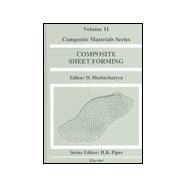The first chapter is a brief introduction to the principles of sheet metal forming. The next two chapters introduce the various forms of materials, manufacturing techniques and the fundamentals of computer simulation. Chapter 4 describes the different aspects of thermoforming of continuous fibre reinforced thermoplastics and the following chapter studies the shear and frictional behaviour of composite sheets during forming. Chapter 6 explores the possibility of applying the grid strain analysis method in continuous fibre reinforced polymeric sheets. The next two chapters address fundamental concepts and recent developments in finite element modelling and rheology. Chapter 9 introduces the theory of bending of thermoplastic composite sheets and shows a novel way of determining both longitudinal and transverse viscosities through vee-bend tests. A significant expansion in the usage of composite materials is taking place in biomedical areas. Chapter 10 discusses the thermoforming of knitted fabric reinforced thermoplastics for load bearing and anisotropic bio-implants. The final chapter introduces roll forming, a commonly used rapid manufacturing process for sheet metals, and discusses the possibility of applying it economically for continuous reinforced thermoplastic sheets.








